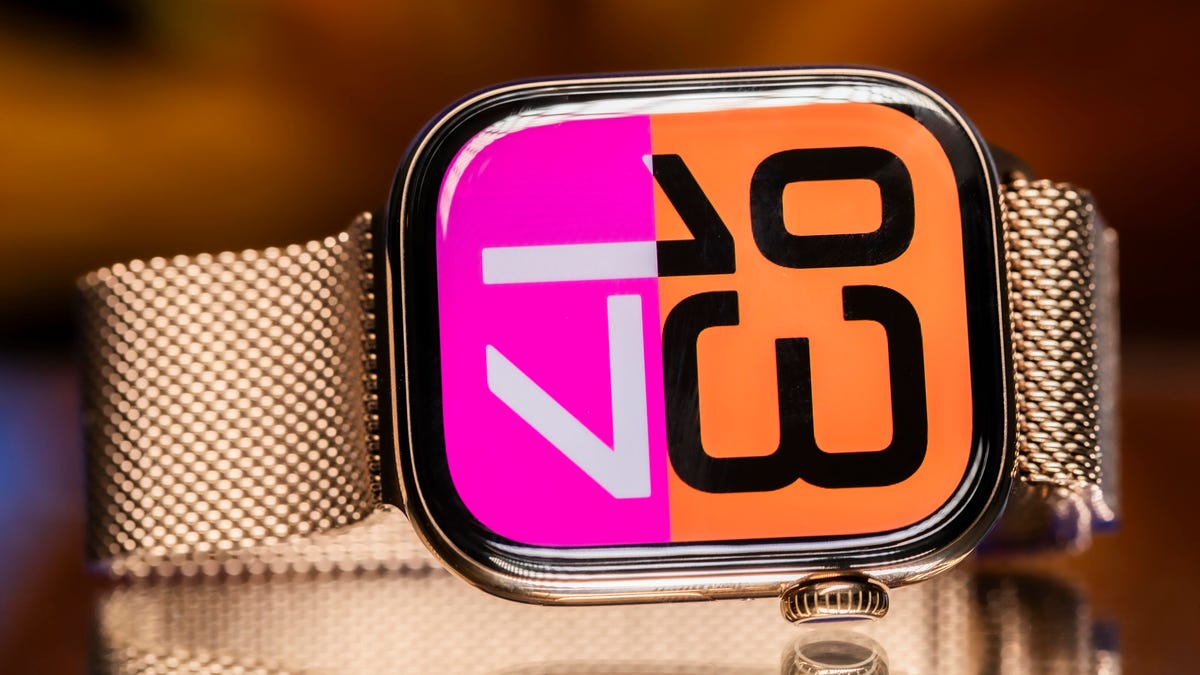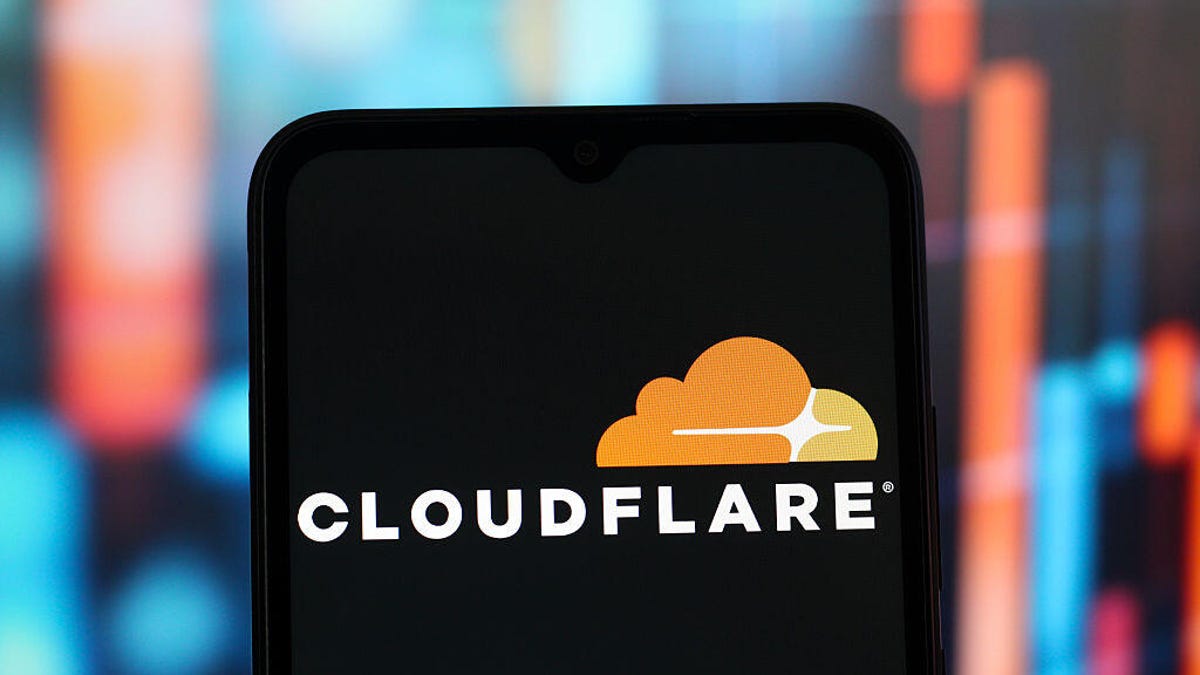Technologies
The Next Apple Watch Series 11 Has a Release Date and a Few Surprises
Apple’s Sept. 9 event could unveil more than one new Apple Watch model, along with some welcome updates. Here’s everything we know so far.

Apple just confirmed its «Awe dropping» event for Sept. 9, at Apple Park, and we’re expecting a fresh lineup of Apple Watches to take the stage.The headliner will likely be the Apple Watch Series 11, but Apple may have also tipped its hand on the Ultra 3. MacRumors uncovered imagery buried in the iOS 26 public beta showing display details for what’s likely the next-generation rugged watch.
With the event just days away, the clues are stacking up. Here’s a look at everything we know, suspect, and can reasonably expect from Apple’s 2025 smartwatch lineup.
Apple Watch Series 11 price and availability
Traditionally, new models go on sale anywhere from a few days to a couple of weeks after the keynote. This year, that could mean preorders opening on Friday, Sept. 12, with availability starting the following Friday, Sept. 19. That said, recent years have seen delays due to production issues, and it’s still unclear how newly imposed tariffs might affect both the launch timing and pricing in 2025. For context: the Series 10 starts at $399 for the base model, while the Ultra 2 comes in at $799. The other question is what the most expensive variant will be — solid gold, diamond-encrusted Hermès, anyone?
How many Apple Watches will we get?
Based on the usual update cycle and now the latest clues in iOS 26, we’re at least getting a flagship (Series 11) and an Apple Watch Ultra 3 as revealed by reference in Watch OS 26. Also likely, is the possibility of getting a next-gen SE model, according to a report from Bloomberg’s Apple analyst Mark Gurman. The Apple Watch Ultra and the cheaper SE line haven’t exactly followed a predictable upgrade cycle, but last year’s absence could prove a strong clue that 2025 could be the year we get all three again.
The new Ultra and Series 11 are mostly expected to look the same, while the SE could be getting a refreshed exterior, according to Gurman. And the Ultra could get satellite connectivity and 5G RedCap network access that would bring even the most remote adventures «on the grid.»
Apple Watch Series 11 design
The Series 11 is expected to keep the slim, flat-edged design introduced on the Series 10 (42mm and 46mm), but Apple’s new Corning partnership means all of the glass protecting the display will be made in the US. Not only does the news make for a great marketing bullet; it could also hint at improved durability, sustainability benefits, and potentially faster repair turnarounds if replacement glass is sourced domestically.
If the leaked iOS 26 imagery holds true, the Ultra 3 will also have a similar design and slightly larger screen with a 422×514-pixel resolution (up from the Ultra 2’s 410×502 pixels). This could be achieved by slimming down the bezels while keeping the same overall case size, in keeping with Apple’s tradition of maximizing screen real estate without making the already-large Ultra any bulkier.
According to MacRumors, the Apple Watch could also get a more energy-efficient screen, maybe an improved LTPO display with higher resolution and better brightness, which, on paper, could help improve the battery life. This could be reserved for the higher-end Ultra 3, which will likely otherwise keep its original design.
Meanwhile the more affordable SE, could see a more extensive design overhaul; it would keep the body of the Series 8 and, according to Gurman, but get several upgrades from the Series 10, like an always-on display.
Apple Watch Series 11 processor
Apple typically bumps up the processor with every new smartwatch, so we should see an Apple S11 chip this time around for at least the Series 11 and Ultra 3. The Ultra 3 is also rumored to get satellite connectivity and 5G support, but according to Gurman, these features likely won’t make it to the Series 11. Considering last gen’s upgrade cycle, my personal bet would also be on the SE getting a processor bump up to the S9 chip, currently found in the Ultra 2 and the Apple Watch Series 9.
Apple Watch Series 11 battery
If there’s one thing on everyone’s wishlist, it’s better battery life. The Series 10 introduced faster charging — 0% to 80% in just 30 minutes compared with 90 minutes on previous models — but there’s room for improvement in battery capacity itself.
While there aren’t any rumors indicating that new Apple Watches will get a longer battery life, I truly hope Apple addresses the battery because its smartwatches are falling behind. Some Android models use dual chipsets to divide tasks and optimize battery life. I’d like to see Apple adopt a similar strategy and finally push battery life to two full days on a single charge for regular models. I hope the Ultra, which currently gets a full 72 hours on a charge, gets the faster charging of the Series 10 and pushes its battery life limits beyond three days.
Apple Watch health and fitness upgrades
There’s been a persistent rumor about blood pressure tracking finally making its way to the Apple Watch, but it’s unclear when it will be ready. According to a March report from Gurman, Apple has already been testing the feature in its smartwatch but has run into problems. Other wearables health companies like Omron and Med-Watch have proven it’s possible to measure blood pressure from the wrist, but adding this feature would likely require new sensors and a bulkier design. It would also be less precise than dedicated health devices like Omron’s and measure baseline metrics like the Galaxy Watch 7 and Ultra (which isn’t supported on Samsung watches in the US).
Blood pressure and glucose monitoring have also been thrown in the mix, but the latter might not be fully baked for this cycle according to Gurman.
A WatchOS glow-up on the Series 11
Apple also gave us a preview of the new interface for the Apple Watch with WatchOS 26 at its developers conference in June. The new UI update includes a new «Liquid Glass» display with glassy, transparent design language that mimics the one seen in visionOS.
The redesign features clear overlays for icons and notifications, resulting in a more uniform look and feel across Apple’s ecosystem. Google made a similar move with its redesigned UI, Material 3 Expressive, for Android phones and smartwatches with Wear OS 6.
Want a full breakdown of everything Apple announced, including the new iOS 26 and its eye-catching Liquid Glass design? Here’s everything you missed at WWDC 2025.
Health and fitness coaching
WatchOS 26 also introduced an AI-powered Workout Buddy to the Apple Watch, offering encouragement and real-time feedback during specific workouts. Most of the heavy lifting will happen on the iPhone, meaning the feature requires pairing the watch with a newer Apple Intelligence-enabled iPhone. The Series 11 (and Ultra 3) could push this further by leveraging their more powerful chipset.
This could include coaching that goes beyond just the workout app, potentially debuting on the Series 11 and then also rolling out to compatible Apple Watches. According to Gurman, Apple has been working on a major Health app revamp, code-named Project Mulberry, that would bring AI recommendations and actionable health and fitness insights to users. The new «Health Plus» app would likely arrive as part of an iOS 19 update, working in tandem with WatchOS 11 to gather and process data. Though it’s still unclear which devices would support it, we could get a first look as early as June 2025 at Apple’s Worldwide Developers Conference.
Health coaching is something other competitors, like Garmin and Fitbit, offer through their platforms via premium (paid) subscriptions. It’s not clear whether Apple would charge extra for these features, or if they’d be baked into the standard Health app at no additional cost.
Additional future Apple Watch surprises
There’s another rumor floating around that the Apple Watch could get a camera — not for selfies, but for AI-based image recognition. With the release of Apple Intelligence, Apple introduced a visual search tool on the iPhone that uses the camera to provide relevant information about objects and places.
According to a report by Gurman, Apple is exploring this option, and even if the company decides to move forward with the technology, it likely wouldn’t make its way to the Apple Watch until the 2027 models. While it’s not expected for this launch, it could hint what kind of AI integration will arrive with WatchOS 12. By contrast, WatchOS 11 lacks any Apple Intelligence features.
An even further-fetched clue hints at a foldable Apple Watch with two cameras. A recent Apple patent, first uncovered by Patently Apple, and published by the US Patent and Trademark Office in March, details an Apple Watch design featuring a foldable screen and another with a dual-screen display that either folds or slides out. The additional screens could give the Apple Watch more real estate to expand its functionality and make it less reliant on the iPhone. The same patent also points to the possibility of two cameras on this dual-screened watch for either AI processing or video calls. Apple often files patents well before any related technology appears in an actual product, so even if this concept does live to see the light of day, we’re not expecting it to make its public debut anytime soon.
Technologies
The Porsche Cayenne Finally Goes Electric, and It’s the Most Powerful Porsche Ever
Porsche has been gradually electrifying its lineup, and the fan-favorite Cayenne is the latest to go green.
Technologies
Cloudflare CEO Apologizes for ‘Unacceptable’ Outage and Explains What Went Wrong
For several hours Tuesday, a significant portion of the internet was unavailable in Cloudflare’s worst outage since 2019.

The Cloudflare outage on Tuesday that disrupted access to many websites and services — including OpenAI, Spotify, X, Grindr, Letterboxd and Canva — was the company’s worst outage since 2019, CEO Matthew Prince says.
Other disruptions have centered on specific network features, Prince wrote in a blog post. «But in the last 6+ years we’ve not had another outage that has caused the majority of core traffic to stop flowing through our network.»
Cloudflare is a cloud services and cybersecurity company based in San Francisco that is used by approximately 20% of all websites, according to W3Techs. It’s one of a handful of services, along with Amazon Web Services, CrowdStrike and Fastly (all of which have experienced major outages in the past few years) that you might never have heard of, but that provide essential internet infrastructure.
The bulk of sites and services impacted by Tuesday’s outage, which began around 3:30 a.m. PT, seemed to recover within just over three hours. By the end of the day, everything had returned to normal, and Cloudflare set about explaining what went wrong. Here’s what you need to know.
Don’t miss any of our unbiased tech content and lab-based reviews. Add CNET as a preferred Google source.
What caused the Cloudflare outage?
Cloudflare was keen to emphasize that the outage was not caused either directly or indirectly by a cyberattack. At first the company did suspect it might have originated from a «hyper-scale DDoS attack,» Prince said in his blog post. But it turned out that the outage resulted from an internal software failure.
A change in one of Cloudflare’s databases generated a larger-than-expected feature file, which was too big for the company’s software to run, said Prince. This caused the software to fail.
Once Cloudflare identified the problem, it was able to replace the problematic file with an earlier version and get most traffic flowing normally again by 6:30 a.m. PT.
«We are sorry for the impact to our customers and to the Internet in general,» said Prince. «Given Cloudflare’s importance in the Internet ecosystem any outage of any of our systems is unacceptable. That there was a period of time where our network was not able to route traffic is deeply painful to every member of our team. We know we let you down today.»
Which sites and services were impacted?
Cloudflare has a massive range of clients across the internet, ranging from websites that are household names to smaller services you might not have heard of. Due to its size, when it went down, it took many of those sites and services with it.
Among those affected by the outage was Downdetector, which is where most people go to report problems when services are offline. (Downdetector is owned by the same parent company as CNET, Ziff Davis.)
Once it got back up and running, Downdetector said that it received over 2.1 million reports during the outage period. Over 435,000 of these came from the US, with the UK, Japan and Germany appearing to be the countries that were next most affected.
Most of the reports pertained to Cloudflare, but other affected companies also received a significant number of reports. They include X (320,549 reports), League of Legends (130,260 reports), OpenAI (81,077 reports), Spotify (93,377 reports) and Grindr (25,031 reports).
How did the outage unfold?
Cloudflare first acknowledged the outage at 3:48 a.m. PT. The company issued a statement on its system status page saying that it was aware of the problem.
«Cloudflare is aware of, and investigating an issue which impacts multiple customers: Widespread 500 errors, Cloudflare Dashboard and API also failing,» it said. «We are working to understand the full impact and mitigate this problem. More updates to follow shortly.»
At 5:09 a.m. PT, the company said the issue had been identified and a fix was being implemented. In the subsequent hours, errors began to drop and services gradually came back online.
Cloudflare added at 9:14 a.m. PT that most services had returned to normal. «A full post-incident investigation and details about the incident will be made available asap,» it said.
Is the internet stable and reliable?
The Cloudflare outage comes just one month after Amazon Web Services went down, causing havoc across the internet. The AWS outage affected sites including Reddit, Snapchat, Roblox and Fortnite, sparking many to ask whether having such huge swaths of the internet reliant on a few centralized services is sensible or safe.
«The Cloudflare outage is not explicitly caused or linked to the AWS or Azure outages last month, but like those failures, it shows the impact of concentration risk,» said Brent Ellis, principal analyst at Forrester Research. «In this case, the 3 hour 20 minute outage could have direct and indirect losses of around $250 million to $300 million when you consider the cost of down-time and the downstream effects of services like Shopify or Etsy that host the stores for tens to hundreds of thousands of businesses.»
The disruption to services from ChatGPT maker OpenAI in particular highlighted concerns about the growing investment in artificial intelligence and the fragility of the cloud infrastructure that AI relies upon to function every day.
«The most dominant platform did not buckle because of simultaneous queries or the release of a new competitive model, but because of a problem with Cloudflare, a web security and performance provider,» said Sarah Kreps, director of the Tech Policy Institute at Cornell University. «The issue exposes the reality that this multibillion, even trillion-dollar investment in AI is only as reliable as its least scrutinized third-party infrastructure.»
Technologies
The iPhone 17’s Unexpectedly Satisfying Tips and Accessories
-

 Technologies3 года ago
Technologies3 года agoTech Companies Need to Be Held Accountable for Security, Experts Say
-

 Technologies3 года ago
Technologies3 года agoBest Handheld Game Console in 2023
-

 Technologies3 года ago
Technologies3 года agoTighten Up Your VR Game With the Best Head Straps for Quest 2
-

 Technologies4 года ago
Technologies4 года agoBlack Friday 2021: The best deals on TVs, headphones, kitchenware, and more
-

 Technologies4 года ago
Technologies4 года agoVerum, Wickr and Threema: next generation secured messengers
-

 Technologies4 года ago
Technologies4 года agoGoogle to require vaccinations as Silicon Valley rethinks return-to-office policies
-

 Technologies4 года ago
Technologies4 года agoOlivia Harlan Dekker for Verum Messenger
-

 Technologies4 года ago
Technologies4 года agoiPhone 13 event: How to watch Apple’s big announcement tomorrow

